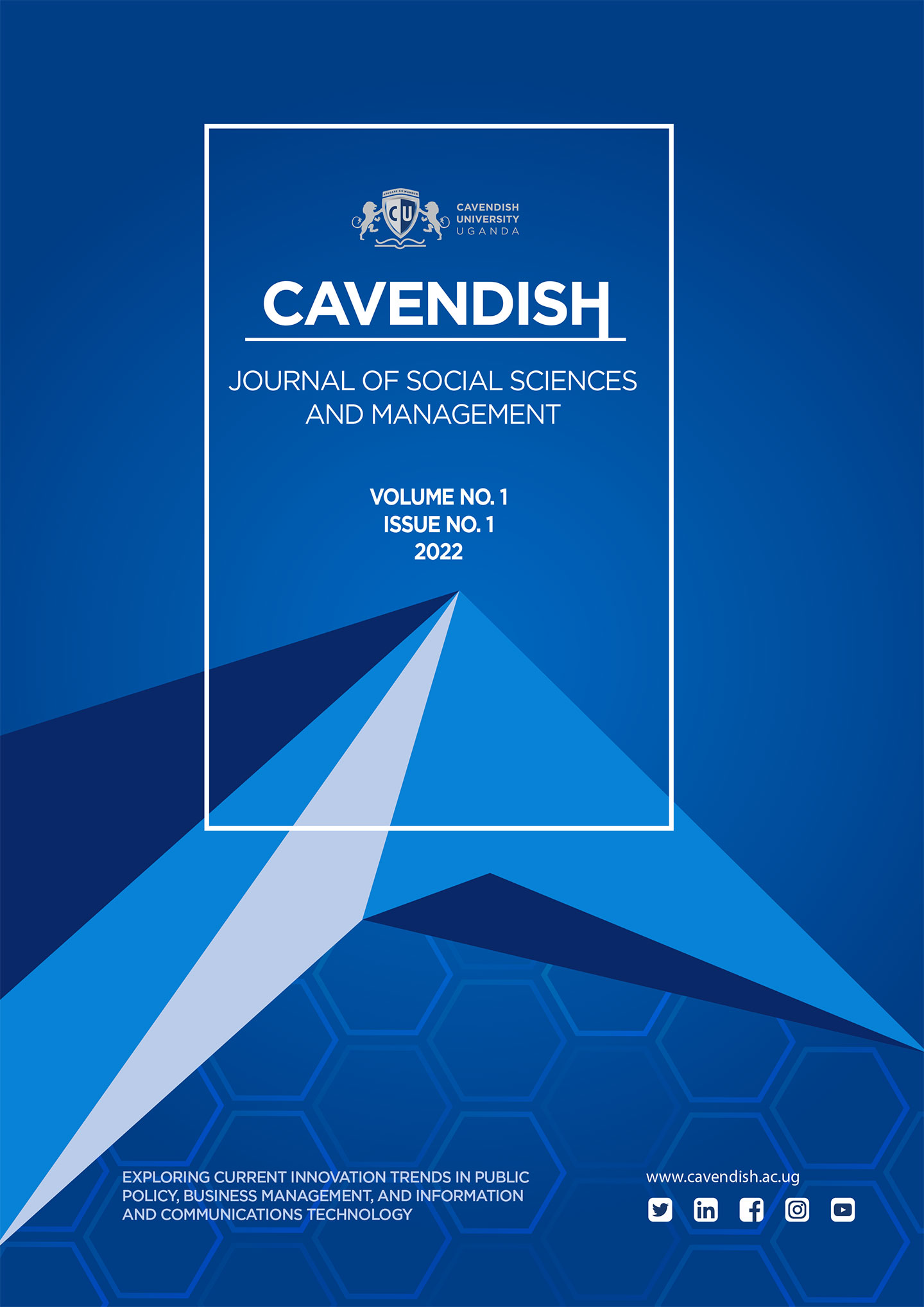Introduction
The Cavendish Journal of Social Sciences and Management (CJSSM) is a peer-reviewed publication that provides an interdisciplinary platform for scholars working in collaboration with industry practitioners and policy makers to disseminate high quality research findings that are crucial in the positive socioeconomic transformation of societies. CJSSM’s articles are triple-blind, peer-reviewed by distinguished scholars and practitioners drawn from various walks of life. One key feature of the Journal is its orientation towards the application of knowledge for innovations in industry and public management. The CJSSM is open to contributions from scholars and professionals in diverse range of fields, globally. Prospective authors are encouraged to network and collaborate with professionals in their respective fields to enrich their submissions in line with the journal’s emphasis on interdisciplinarity and knowledge application. The theme for the current issue is “Trends in Business Innovations, Public Policy, and Information and Communications Technology”.
Themes for CJSSM
The CJSSM focuses on five major themes that are in line with the academic disciplines within CUU and combinations of them:
- Business and Management
- Social and Economic Sciences
- Computer Science and Information Technology
- Public and Environmental Health
- Law and Jurisprudence
Types of submissions
Intending authors may make submissions of manuscripts that fall into any of the following categories of papers:
- Empirical Research
- Discussion Paper
- Systematic Review
- Concept Paper
- Policy Review
- Book review
Submission Guidelines
Manuscripts submissions to the CJSSM should follow the following guidelines
- Manuscripts should not be longer than 8000 words – notes and references inclusive, and must have an abstract of not more than 200 words inclusive of five key words.
- An abstract should clearly state the following: background/rationale; problem/issues examined (including research questions); details of method(s) used (including sample and sampling technique); results/findings; conclusion; and implication(s)/relevance of the study.
- The title and author’s biographical details (name, university/department, address, position/title, telephone, e-mail) should be identified on the title page only as well as email addresses.
- Author(s) names should be written in First name, Middle name, and Surname order (i.e. First name first, and Surname last).
- Format: Font of body text should be Times New Roman Size 12. Alignment should be justified. Paragraphs should be indented with one tab (no block paragraphing). Line spacing should be 1.5 lines.
- Authors should be consistent in spelling – either American English or British English.
- Tables and figures should be alluded to in the text while allusions to ‘notes’ should be indicated in superscript in the text. Notes should be presented as endnotes (at the end of the article, just before the References).
- All the contents of any table or figure should be fully discussed in the text. Tables and figures should be used minimally and should only serve as further points of reference.
- Referencing should follow the APA style and all references should be listed, in strict alphabetical order, at the end of the article.
- et al. can be used in in-text citations but not in end references. In end references, the names of all authors must be stated.
- In in-text citations, et al. must not be used at the first mention of a work. The surnames of all authors and year of publication must be stated in the first instance of a citation.
- Manuscripts must be rich in references and literature citations. Except in rare circumstances, references and literature citations should not be above 10 years.
- Author(s) shall be responsible for securing any copyright waivers and permissions as may be needed to allow (re)publication of material in the article (text, illustrations, etc.) that is the intellectual property of third parties.
- Author(s) may be required to supply the data upon which figures are based.
All manuscripts should follow the following format:
- Title (not exceeding 18 words), and below the title, full names of authors, their addresses, email addresses and telephone numbers. The corresponding author should be indicated.
- Introduction/Background
- Literature Review (Justification of study; Presentation of research questions/hypotheses and their rationale; Review of related empirical studies)
- Method of Study (Details of method(s) used; Details of sample/sampling techniques; Instrument(s) used to gather data; Instruments of measurement)
- Results (Details of results). Maximum of three tables or figures. Please note that the journal prefers textual discussion of results rather than mere presentation with tables. Use words to interpret your data, not tables or figures.
- Discussion (Discussion of results and findings per each research question/hypothesis)
- Appendix/Appendices
- Endnotes (if any)
- References
Submissions
- Manuscripts are to be submitted to secretarycjssm@cavendish.ac.ug (as Word document attachment using Microsoft Office Word).
- Before submitting a manuscript, please read the guidelines carefully again and ensure that the paper conforms to them all as non-conformity may lead to outright rejection.
- All manuscripts received shall be sent to two or more assessors on a blind review format.
Plagiarism Check
- All manuscripts received shall be subjected to plagiarism check and the result must not be higher than the journal’s acceptable threshold. Any manuscript with a plagiarism check result that is higher than the acceptable threshold shall not be published even if it receives favourable assessments.
